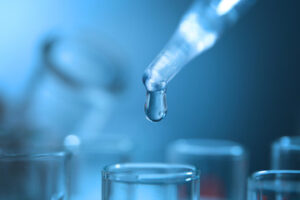The Importance of Water Quality Testing
Water Quality Testing Near Me involves obtaining samples from sites and transporting them to certified laboratories for analysis. The results are compared against government standards and limits.
Physical parameters such as temperature, turbidity (cloudiness), color, and taste can initially indicate possible problems. Chemical tests are also conducted. These include pH and bacterial counts.

Water sampling is an important part of water quality testing. It involves taking a sample of the water from the point of interest, such as a river, lake, or well. The water is then tested in a laboratory for any contaminants. This information is used to make decisions about water treatment and resource management. In addition, the results of water sampling can help identify potential health risks and determine whether a contaminant has reached a harmful level.
When it comes to sampling, proper techniques are essential for accurate results. The sampling location should be chosen based on the location of any possible contaminants and how the water will be used. Sampling points should be sterile, and the sample must be collected in a clean container. The sample should be delivered to the lab as soon as possible, as volatile compounds can change rapidly in temperature. It is also best to store the sample in a cooler or refrigerator until it can be delivered.
Most public drinking water supply systems test their water for a variety of chemicals and microorganisms. These tests are designed to ensure that the water meets strict health and safety standards. However, many people rely on private wells or other unregulated sources for their water. Those who have private wells should take water samples regularly to ensure the safety of their water supply.
There are several different types of water testing kits available. Some are cheap and easy to use, while others require a little more knowledge about water quality to interpret the results. Most of these kits include test strips that work by changing color to indicate the presence of specific chemical compounds. The results are then compared to a chart to show the concentration of the chemicals. These types of tests are especially useful for determining the pH and chlorine levels in a water sample.
More advanced water testing kits are available for professional use, such as luminescence testers and electrochemical testers. These instruments are more expensive than simple test strips, but they provide the most accurate results. These instruments can be used to measure the presence of bacteria, dissolved oxygen, total dissolved solids and salt, and electrical conductivity. However, they are more complex to operate and require regular calibration and maintenance.
Besides water sampling, laboratory analysis is an important part of the overall process of testing for water quality. It involves evaluating a sample to determine the presence of any contaminants and how much is present. Laboratory tests are conducted by trained scientists using specific procedures and equipment to measure a variety of physical, chemical and bacteriological parameters.
A few of the most important water quality parameters include temperature, turbidity, color, odor and taste. These parameters indicate the health of the water and help to identify potential pollution sources. Unusual readings can indicate a possible pollution problem and should be reported to a laboratory.
Laboratory tests are grouped into three categories: health risk parameters, general indicators and nuisance parameters. Health risk parameters are those that could pose a threat to human health. Examples include bacterial contamination and toxic chemicals. Toxic chemicals can be detected using a variety of methods, including spectrometry and chromatography. These results can be used to develop a risk assessment and prioritize action.
The water quality of the source of a water supply can vary dramatically depending on its location, the amount and types of contaminants introduced and the method of treatment. Private wells and public utilities may have different responsibilities for ensuring the safety of drinking water. The Environmental Protection Agency oversees public drinking water systems and requires them to adhere to a number of minimum standards for more than 90 contaminants. Private water suppliers should have their wells tested regularly to ensure that the quality of their water is consistent with EPA regulations.
Biological tests are an indication of microbial activity in water, which can cause disease or illness. Most bacterial contaminants do not present a risk to humans but the presence of coliform bacteria can indicate faecal pollution from human and animal wastes.
In addition to laboratory tests, hand-held digital instruments are available for assessing water quality. These are more portable than the previous options, but require regular calibration and maintenance to obtain accurate results. Luminescence tests and electrochemical testers are also available, but they are usually only suitable for use by experienced professionals.
When water quality data is collected and analyzed, the results must be interpreted. This step is important for identifying potential problems and risks. The results also help to determine compliance with environmental standards and guidelines.
To interpret the results, various statistical techniques can be used. Some of these include simulation and forecasting methods, correlation, linear regression, and PCA. These techniques provide descriptive rather than inferential information and are often better suited for exploratory analyses. However, the choice of technique depends on the research question, sample size, and available resources.
Water quality testing involves assessing the chemical, physical, and biological characteristics of water. This process is critical for human health and ecosystem sustainability. The conditions and composition of natural water bodies can be affected by a variety of factors, including human activities like agricultural runoff and industrial waste discharge.
Samples of water are taken from sources such as rivers, lakes, and wells and then analyzed for the presence of contaminants and pollutants. The tests are conducted by certified laboratories using specialized equipment. Some tests can be performed on-site using portable kits, but others must be sent to a lab for more sophisticated analysis.
The most common water quality tests are for bacterial contamination and the presence of hazardous chemicals. Bacterial tests check for the presence of fecal matter and other contaminates that may pose a threat to human health. Water temperature and turbidity (cloudiness) are other common physical parameters that impact water quality.
There are countless chemicals in the environment, making it impossible to test for all of them. However, many of these chemicals can be detected through a simple laboratory analysis. For example, pH levels can indicate contaminant concentration by influencing the corrosivity of the water and the solubility of contaminants. High levels of dissolved solids can be indicative of the presence of salts and other inorganic compounds.
Other chemicals commonly tested for in water include mercury, pesticides, arsenic, and fluoride. These chemicals can be introduced into the environment by human activity or natural processes, and their concentration in the water can impact both the health of humans and other organisms.
Water quality tests are used by many types of organizations, from governmental bodies trying to meet environmental regulations to homeowners concerned about the safety of their well water. Testing can help prevent illness from contaminated drinking water and provide information on the chemical make-up of water. The process of water testing involves sampling, laboratory analysis, reporting and record keeping.
Samples of water are taken from various sources, such as rivers, lakes, and wells. The samples are collected using sterile containers following specific guidelines for avoiding contamination. They are then transported to a laboratory for testing. Water samples may be tested for a variety of contaminants, including TVC (total coliform bacteria), E.coli, Hepatitis A, Cryptosporidium, and iron. The results of these tests are then reported to the appropriate agencies.
The purpose of monitoring water quality is to assess the impact on the aquatic ecosystem and the hygienic suitability of drinking water. Water quality is usually determined by the concentration of organic pollution indicators such as dissolved oxygen, biochemical and chemical oxygen demand (BOD and COD), nitrogen and phosphorus and organic micropollutants (TOC). Other factors may include water temperature, salt content, colour, suspended particulate matter, and turbidity.
Bacteriological examination is a vital part of water quality testing. The aim of routine bacteriological examination is to ensure that water intended for human consumption is free from excretal pollution (faecal coliforms).
Besides bacterial parameters, turbidity and soluble salts can also be indicative of the sanitary suitability of a water supply. High turbidity can result from the presence of fine-grained material in the water and can be caused by erosion or dredging activities. It can also be due to the accumulation of pathogens encased in particles that escape disinfection.
The frequency of bacteriological testing depends on the water supply type and the potential for contamination. In case a sanitary survey or visual inspection indicates that a water supply has become obviously polluted, remedial action should be taken irrespective of the bacteriological examination results. In unpiped rural supplies, a more frequent bacteriological examination is often the only way to guarantee the safety of drinking water.

